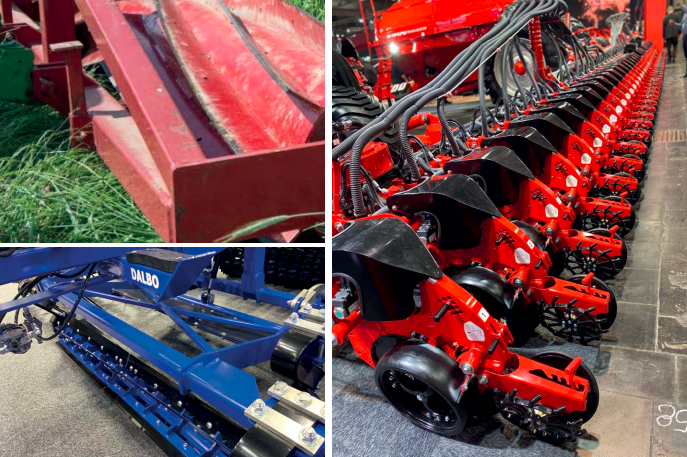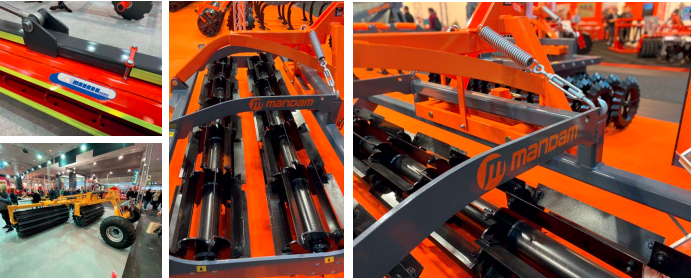In 2017 the Rodale Institute talked about the use of crimper rollers in organic no-till. They said:

“In conventional systems, farmers can practice no-till by using chemical herbicides to kill cover crops before the next planting. Organic no-till, on the other hand, uses no synthetic inputs. Instead, small-scale organic no-till farmers use hand tools, like hoes and rakes. Largescale organic no-till farmers can utilize a special tractor implement called the roller crimper (below), invented here at Rodale Institute.”
How does a Crimper Roller work?
The roller crimper is generally a waterfilled (or solid) drum with chevronpatterned blades that attaches to the front of a tractor. More recently we have also seen them mounted on the front of drills as well. As the tractor drives over the cover crop, the roller crimper mows the plants down, cutting the stems every 16cm. The cover crop, now hopefully terminated, remains on the ground where it forms a thick mulch that suffocates weeds. Drills on the rear of the tractor then part the cover crop mulch, drill in seeds and cover them up to ensure soil contact. It generally happens in a single pass, saving vital time and energy for farmers. The cash crop then grows straight up through the cover crop mulch. But since we weren’t worrying much about glyphosate in 2017, the concept hasn’t gained much traction.

Timing is everything
The Rodale Institute also told us that cover crops must be terminated at just the right time at the end of their life cycle. This prevents them from a) continuing to grow after being rolled or b) going to seed and spreading. Therefore, unfortunately, one can’t use the roller crimper to simply mow down a field of unruly weeds midsummer—they’ll just grow back. You need to crimper roll when the cover crop reaches anthesis—when it switches from being vegetative to reproductive. In a rye or small grain, this will occur almost uniformly through the field and you’ll notice pollen shed. In vetch or legumes, which flower at different times, the rule of thumb is to roll when between 50% and 100% of the crop is flowering. At the time the Rodale Institute even offered plans for making your own. Since then we have seen a couple of companies in the UK produce their own front mounted crimper roller in the UK.
Fast Forward 3 Years
We are now looking at losing glyphosate, in fact it has already gone in some European countries. When we attended Agritechnica in November last year, crimper rollers were everywhere. It seems the appetite for their adoption, albeit not straightforward, has grown significantly. Especially in Europe. The big question being, is this something you will trial in the next 12-24 months? Here are just some of the other crimper rollers we saw at Agritechnica, some of which you may see at LAMMA 2021.



